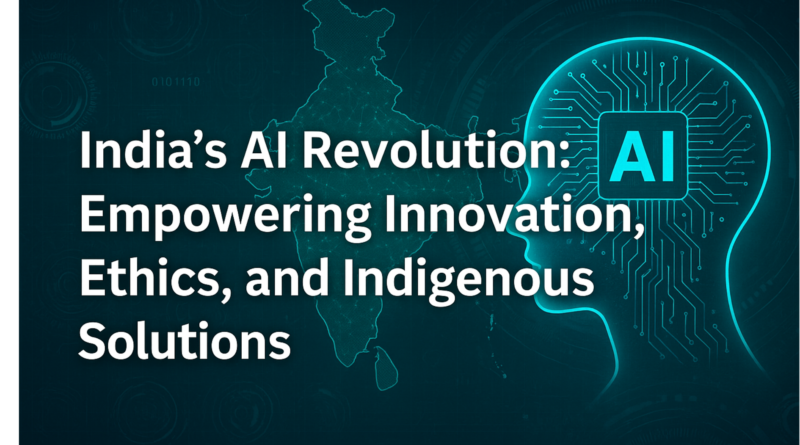“India’s AI Revolution: Empowering Innovation, Ethics, and Indigenous Solutions”
In India, the landscape of artificial intelligence is rapidly evolving, with both government and private sectors investing heavily in AI research and development. One of the key developments is the push towards creating indigenous AI technologies. The Indian government has launched the IndiaAI Mission, an initiative aimed at bolstering the country’s AI capabilities and ensuring strategic autonomy in emerging technologies. As part of this initiative, the government has selected Sarvam AI, a homegrown startup, to develop India’s first indigenous large language model. This model will not only cater to local languages but also align with India’s specific needs, including education, healthcare, and government services. The project is seen as a step towards reducing dependency on foreign AI technologies and fostering innovation within India’s growing tech ecosystem.
The government’s push for AI research is coupled with an increasing focus on AI ethics and regulations. India is working on legislation that addresses the ethical deployment of AI, focusing on transparency, fairness, and accountability. These regulations are aimed at ensuring that AI technologies do not result in discrimination or harm, particularly in areas like hiring, healthcare, and law enforcement. Furthermore, there’s a growing emphasis on creating AI that is culturally and linguistically inclusive, making sure that AI applications are accessible to people from diverse backgrounds and languages. This regulatory framework is being designed to allow for innovation while also safeguarding the public from potential misuse of AI technologies.
At the same time, India’s private sector is making significant strides in AI applications, especially in industries such as healthcare, finance, and agriculture. Companies like Tata Consultancy Services (TCS), Infosys, and Wipro are leveraging AI to streamline operations, predict consumer behavior, and create new products. In healthcare, AI is being used for diagnostics, treatment predictions, and personalized care. In agriculture, AI-based solutions are helping farmers increase crop yields through data analysis and predictive models. These developments are not only contributing to India’s economic growth but also positioning the country as a major player in the global AI race, particularly in the context of AI’s role in addressing the unique challenges faced by developing nations.




